Director’s Report
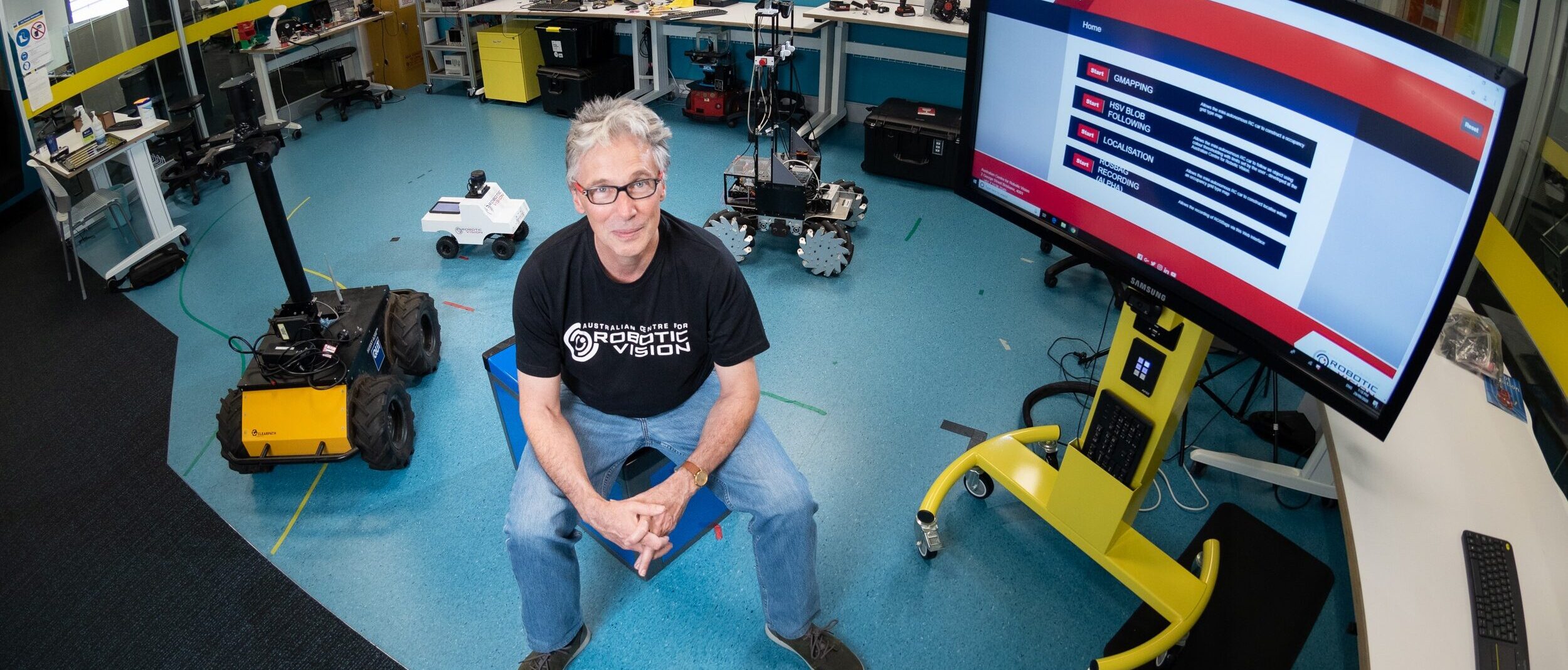
Over the past seven years we’ve published 378 journal articles and 523 conference papers, amassing over 32K citations. We have designed and built 13 unique robots, researchers have delivered 768 government and industry presentations, and we have attracted over $52M in additional funding from government and industry. In 2020 alone, media coverage about the Centre and our researchers reached a global audience of over 1 billion people. We’ve created the new discipline of robotic vision and established a strong national and international research community.
OUR FINAL YEAR
One of the hallmarks of any Centre of Excellence is the collaboration with colleagues across each of our Australian nodes and our international partner institutions. It is from collaboration that important new ideas arise. No one could have predicted what a challenging year 2020 would be, and the most significant consequences for us as a Centre was the inability to spend as much time together. The opportunities to meet face-to-face at conferences, project reviews and workshops were just not possible due to COVID-19. This made our annual conference RoboVis, held in November, such a delight. We were all able to connect as a Centre in a hybrid event with many of our people gathering in various locations around Australia, some joining us online and all of us connected virtually for a synchronised event over two and a half days. With 140 attendees it was our largest RoboVis yet. We shared the learnings of our Centre Research Projects, heard from some fascinating external presenters, recognised some of our outstanding researchers in our Centre awards ceremony and reflected and celebrated what a wonderful seven years we’ve had together.
2020 was the final year of the Centre and our official end date is the 31st March 2021. This report showcases the Centre’s impact and legacy as well as the scientific highlights and achievements from this year.
2020 HIGHLIGHTS
Despite the challenges 2020 presented in our final year of operation as a Centre, we’ve still seen many exciting developments and research progress.
Our robotic vision demonstrator was showcased in public events including the World of Drones and Robots Congress, engaging with over 1,000 people. The quality of our research was recognised by The Australian 2020 Research Special Report. QUT was named as the top robotics group in Australia, based on the most citations in the top 20 journals in the field over the past 5 years and our Chief Investigator Professor Chunhua Shen was named a Research superstar in the Lifetime Achievers Leaderboard, a list of Australia’s top 40 researchers measured by their performance over their career.
Some of our researchers are involved in exciting new frontier projects. Chief Investigator Tat-Jun (TJ) Chin, from the University of Adelaide, was appointed to the Professorial Chair of Sentient Spacecraft with the SmartSat CRC and will build Australia’s largest research group dedicated to AI and machine learning for space. Centre researchers at QUT, Matthew Dunbabin, Felipe Gonzalez and myself are CIs in Securing Antarctica’s Environmental Future, an ARC Special Research Initiative, where we will develop robotic technologies to conduct scientific measures in a very harsh environment.
The future for continuing collaborations and investment in robotic vision is strong. Each of our Australian partners has promising means with which to carry the torch forward: the Australian Institute of Machine Learning (AIML) at the University of Adelaide, the QUT Centre for Robotics, and considerable investment in robotics and AI at both Monash University and the Australian National University. QUT will also host the Australian Research Council (ARC) Training Centre for Collaborative Robotics in Advanced Manufacturing which will commence in 2021 and build the human and technical capability Australia needs to underpin our global competitiveness in advanced manufacturing.
In 2020, we continued to pursue our three key strategic priorities of Science, Engage, and Culture and the results are outlined below.
SCIENCE
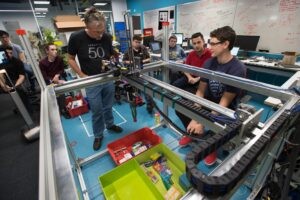
We are leading the world in transformational research in the new field of robotic vision.
When the Centre was funded back in 2014 by the Australian Research Council it was in recognition of the importance of our vision – creating robots that see – to Australia’s national agenda.
It was also validation that our vision could only be achieved through a concerted, large-scale and collaborative effort between some of the most qualified and talented researchers in our field.
With a core group of 48 people (13 Chief Investigators, 6 Partner Investigators, 15 Associate Investigators, 2 Operations Team members, 6 Research Fellows and 6 PhD Students) in place in 2014, we set out to fulfil our vision and over time we have built our group to over 200 strong. We have trained 45 Research Fellows, 100 HDR students including 39 completions and over 130 Honours students. Our Robotic Vision Summer School has educated over 400 students from Australia and abroad.
Our researchers continue to deliver breakthrough science and technologies, having published 378 Journal Articles and 523 Conference Papers, amassing over 32K citations. If the Centre were a person it would have an h-index of 82, achieved in just 7 years. We have created a new generation of robots that can visually sense and understand complex and unstructured real-world environments. We have undertaken transformational research that has achieved international standing in the fields of robotics and computer vision.
Our seven research projects – Learning; Manipulation and Vision; Scene Understanding; Vision and Language; Robots, Humans and Action; Fast Visual Motion Control; and Robotic Vision, Evaluation and Benchmarking – have all continued to feed into our two demonstrator projects – Self-driving Cars and Manipulation.
Our Manipulation & Vision project continued to work on solving complex manipulation problems and developing methods that enable robot manipulators to interact with people and everyday objects. PhD researcher Douglas Morrison developed the Evolved Grasping Analysis Dataset (EGAD) which comprises over 2000 generated objects aimed at training and evaluating robotic visual grasp detection algorithms. Visiting PhD researcher Patrick Rosenberger (TU Wien, Austria) spent three months at our QUT node working on human-to-robot object handovers focusing on how robots can safely and reliably take an object from a person’s hand.
The Robotic Vision Evaluation & Benchmarking project team released a new robotic vision challenge, the first for Scene Understanding. The task in this challenge is to explore an unknown indoor environment and build a detailed map containing objects in the environment. The team also developed the BenchBot API (Application Programming Interface), a software suite that makes it much simpler for users to control robots both in simulation and in reality, and evaluate them for important robotic vision tasks.
Colleagues in the Robots, Humans, & Action project presented a workshop on Deep Declarative Networks (DDN) at the Computer Vision and Pattern Recognition (CVPR) conference, and a tutorial at the European Conference on Computer Vision (ECCV). DDNs have been an important research discovery by Centre researchers and are redefining the way we build deep-learning models. The project team also published the Ikea Assembly dataset, a multi-modal and multi-view video dataset containing 371 samples of furniture assemblies, enabling a rich analysis and understanding of human activities.
Underpinning all our research was the work of our Learning Project which expanded the capabilities of robots by designing and implementing strong visual learning systems that help robots understand the environment around them. This is the Centre’s largest research project and addresses important challenges in deep learning such as effective transfer learning, the role of probabilistic graphical models in deep learning, and efficient training and inference algorithms. Researchers in this project were connected to the Deep Declarative Networks (DDN) workshop mentioned above and this workshop was nominated by the Centre Executive for the Centre’s award for the Best Profile Raising Event in the Robotics and Computer Vision Communities during our annual awards ceremony. The project team had another successful year of paper acceptances including four papers to CVPR, seven papers to ECCV, three papers to the Conference on Neural Information Processing Systems (NeurIPS), and two journal papers accepted to the IEEE Transactions on Pattern Analysis and Machine Intelligence (PAMI).
The details of our Research Projects – the teams, the aim and the results and achievements for 2020 – can be found in the Research Impact section of this report.
ENGAGE
We engage with communities about the potential of robotic vision technologies by sharing our expertise and providing access to robotic vision resources.
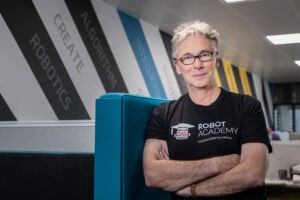
Early in 2020 we established two projects aimed at consolidating our technical legacy and engaging with the research community and the public. The first is the Best of ACRV project which is consolidating the research software behind some of our most cited papers and bringing it to a public release standard.
The second project is our Manipulation Demonstrator which integrates numerous Centre technologies into an easy to understand and interactive demonstration of a robot arm manipulating everyday objects on a tabletop. The robot can move specified objects from one box to another, hand you an object or demonstrate its skill at turning valves. It’s designed to be robust and can run unsupervised over extended periods of time. This demonstrator had its first encounter with the public after being installed at the Advanced Robotics for Manufacturing (ARM) Hub in Brisbane for the month of August, before appearing at QUT’s The Cube during the school holiday program in September, and the World of Drones and Robots Congress 2020 in November, it has engaged with over 1,000 people to date.
The Robot Academy was launched in 2017 and the lessons have been viewed over 1.5 million times, that’s about one lesson being viewed per minute. It continues to be a fantastic platform for making university-level robotics and vision education freely available and accessible globally.
A focus of our engagement with the scientific community has been in the form of the 3rd iteration of the Probabilistic Object Detection Challenge. This challenge evaluates how well the participant can estimate both spatial and semantic uncertainty for every detection using probabilistic bounding boxes. The challenges along with the associated research were held via two workshops for the International Conference of Robotics and Automation (ICRA) and the European Conference on Computer Vision (ECCV).
We had big plans for national engagement that were unfortunately cancelled due to COVID-19. These included the Centre Executive visiting Canberra, to meet with Members of Parliament and government officials, to tell the story of the Centre and emphasise how important robotics, computer vision and AI technologies are to the nation. It also included a Robotic Vision Summit event in Sydney, which was designed to showcase what the tech landscape looks like in Australia, and to help inform a whole of country, and whole of government approach to robotics in Australia. This critical activity will be rescheduled and will be led by our new entity, Robotic Vision Australia, which I detail further below.
Our Monash colleagues, led by Chief Investigator Dana Kulic, will be hosting an interdisciplinary workshop on the ethics of robots that see, in early 2021. Robots that see have the potential to transform our lives by improving our workplaces, assisting us in our homes and facilitating the production of basic human needs such as food, shelter and energy. However, the same technology has the potential to disrupt existing social norms and expectations, change employment patterns, and weaken individual privacy. The workshop will provide a forum for members of the Centre and wider research community to consider and discuss the long term impacts and implications for robotic vision research and identify the potential to mitigate some of these risks. The workshop also aims to encourage roboticists to incorporate different points of view in ethical decision making and technology development.
CULTURE
We are creating a vibrant, energetic, future-focused and collaborative robotic vision community that is developing knowledge leaders for both industry and academia
Our two key annual events, the Robotic Vision Summer School (RVSS) and our annual conference, RoboVis, still went ahead in 2020 and both were a great success.
The Centre’s sixth RVSS had to be relocated from the coastal surrounds of Kioloa to Canberra due to the summer bushfires – the other disaster of 2020. It was held in February with 87 attendees and international guest speakers Stefan Leutenegger (Imperial College, London) and Tobi Delbruck (ETH Zurich and The Institute of Neuroinformatics, Zurich).
Our seventh RoboVis conference was a fantastic two and a half day event in November connecting 140 people in person and online. The program included keynote speakers Dr Stefan Hajkowicz (CSIRO Data61), Dr Jackie Craig (SmartSat CRC), Professor Davide Scaramuzza (University of Zurich) and Dr Catriona Wallace (Ethical AI).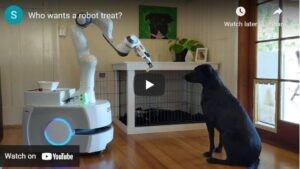
As part of our RoboVis program we created ACRV – The Movie, which premiered on the first night of the symposium. People across the Centre were interviewed and asked a series of questions including what they are most proud of from their time in the Centre, their favourite memories, and the biggest success or impact of the Centre. Overwhelmingly people answered that “the people” were what made the Centre what it is, and what they valued most from being a part of the Centre. As Centre Director I truly feel our biggest success and legacy is our people and the culture we have built. I’m very impressed with the way our group handled the challenges of 2020 and made the effort to connect and work in creative new ways including our engineers taking our robots home to continue their work and involving both their children (and future roboticists) and pets in the experience!
Like so many of our activities this year, our research training within the Centre transitioned to an almost completely online delivery model. The Centre held 20 training sessions over three months and had almost 200 attendees from across our four nodes. The program covered 5 key areas of: careers; equity, diversity & inclusion; media & communications; personal branding and entrepreneurship. We want to create confident, skilled and well-rounded communicators in our researchers so they are ready to share their work with wide and diverse audiences. The Centre is a member of Science Technology Australia (STA) who delivered the program Become a SuperSTEM Communicator, an intensive 5 week science communication program where researchers learnt: how to build their online profile; tell good stories on stage; deal with the media; communicate with authenticity; and speak with influencers and decision makers. We are also a member of Diversity Council Australia (DCA) and they delivered our equity, diversity and inclusion training over 6 workshops including Unconscious Bias, Words at Work, Engaging Men on Gender
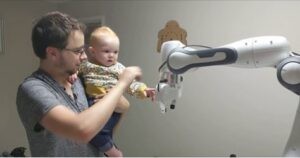
Equality, and Cracking the Glass Cultural Ceiling. The training was insightful and provided our group with further understanding and practical ways we can all keep contributing to positive change in our workplace.
The Centre Executive also invited Lisa Annese, CEO of DCA, to present on diversity and inclusion in the workplace and have a conversation with the Executive on how we as leaders can ensure we are creating and supporting such environments. This was a wonderful and wide-ranging conversation via a 90 minute virtual round table. Lisa provided great insight into ways that we can build and support a more diverse and inclusive culture. In particular, we talked about some of the subtle yet powerful actions we can take as leaders to ensure that we are creating an environment where gender diversity is valued and supported.
Our Centre has continued to shift the gender imbalance within our group and at the end of seven years we have seen small changes in the right direction. When we started in 2014 we had one female Research Fellow and one female PhD Researcher. We now have female representation across all roles in the Centre including Chief Investigators, Associate Investigators, Centre Advisory Board, Research Fellows, Research Engineers, and PhD Researchers. We set high stretch targets of 50% female representation for our RoboVis 2020 conference across delegates and speakers and reached 27% female attendees, and 50% guest speakers. We’ve moved in the right direction but there is still so much more to be done and I encourage all our researchers to continue driving this agenda and positive change throughout their careers.
OUR FUTURE
A huge focus of 2020 was on securing the Centre’s legacy for 2021 and beyond. To help inform this we ran a two week online interactive event in August called the Legacy Jam. We curated content to create a website and opened the event to all current and past Centre members. We called for contributions of memories and photos, and for participants to vote and establish our top 10 Centre achievements, to be featured in our legacy website, which will go live on the 1st April 2021. The top 10 included: COTSbot, our crown of thorn starfish eradicating robot; the first Robotics Roadmap for Australia launched in 2017; the awards and esteem measures our colleagues have received in recognition for their significant contributions; the events we’ve held including RoboVis, RVSS and workshops at international conferences; Cartman, our Cartesian manipulation robot that won the 2017 Amazon Robotics Challenge; the Best of ACRV project; our scientific publications and output; start-ups by Centre researchers and finally, deep declarative networks. The engagement was amazing with 446 visitors to the site, 171 comments, and a lot of great photos and memories shared.
The Best of ACRV repository will be launched in early 2021 and contains a curated selection of high-quality code and papers produced by Centre researchers over the lifetime of the Centre, giving researchers and practitioners access to ready-to-use and high-quality code for their robotic vision project.
We have also established Robotic Vision Australia, a registered charity which will continue the leadership role the Centre has played in the field of robotic vision. Our annual Robotic Vision Summer School will continue to live on under the management of Robotic Vision Australia, with our most recent and seventh summer school running as a hybrid online and in person event across four distributed sites in February 2021.
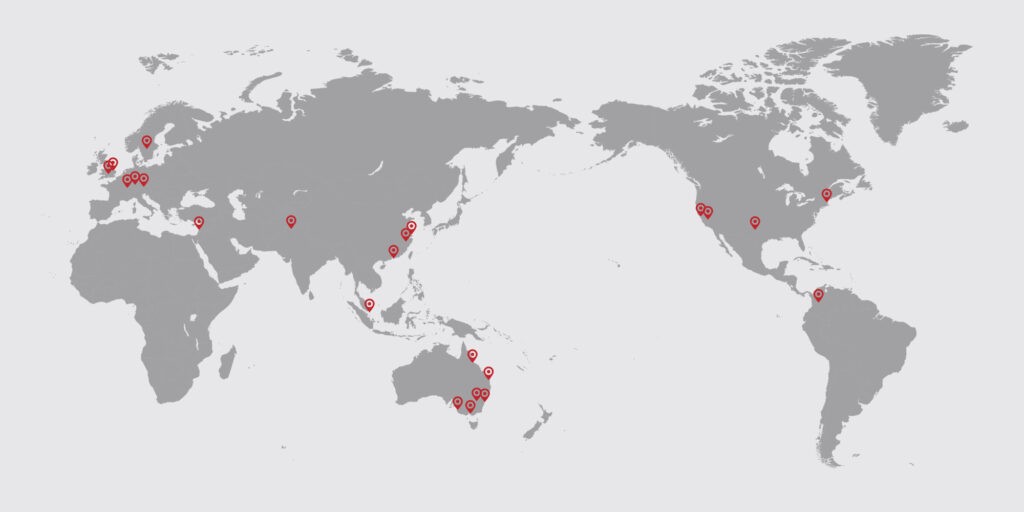
A recurring theme in our Centre movie was that the greatest success of the Centre is our people. It is fantastic to see what our Centre members have gone on to do and the global reach of our Alumni network. Our 44 postdoctoral research fellows and 39 PhD graduates have joined labs and industry in England, the United States, Singapore, China, Switzerland, Sweden, Israel, Pakistan, Germany, Colombia, and Hong Kong. It’s also exciting to see a return of our talent, initially leaving the Centre to gain international experience, many have now returned to Australia to take up positions in Universities and Industry. This is a huge testament to the opportunities that are developing here in Australia. You can see a map of our Alumni network above.
I’d like to thank all our Centre members for the way everyone has worked together and the enthusiasm they have all brought to this very difficult year, and throughout the life of the Centre. The Executive Team comprised of Ian Reid, Katrina Tune, Tom Drummond, Steve Gould, and formerly Rob Mahony, for their excellent leadership and commitment to the Centre and for completing 150 Executive meetings together; our Board Members past and present for their expert wisdom and guidance; the Operations team for wrangling researchers across the four nodes and executing our operational objectives; our Chief Investigators and all our researchers for outstanding research results, drive and collaborations; our host institutions Queensland University of Technology, University of Adelaide, Monash University and the Australian National University; and finally to our funding body the Australian Research Council for recognising the importance of our vision and investing in us to make our Centre and robotic vision a reality.
In closing, the last seven years have been a wonderful journey and it’s been a privilege to be the Director of such a group of talented people who have all worked in pursuit of a common purpose. I thank everyone for their hard work, commitment, and enthusiasm to keep us pushing towards new research discoveries, and to ultimately create robots that see. After seven years, the Australian Centre for Robotic Vision is leaving an incredible legacy behind and has paved the way for a very bright future for robotic vision globally.
Peter
Distinguished Professor Peter Corke, Centre Director
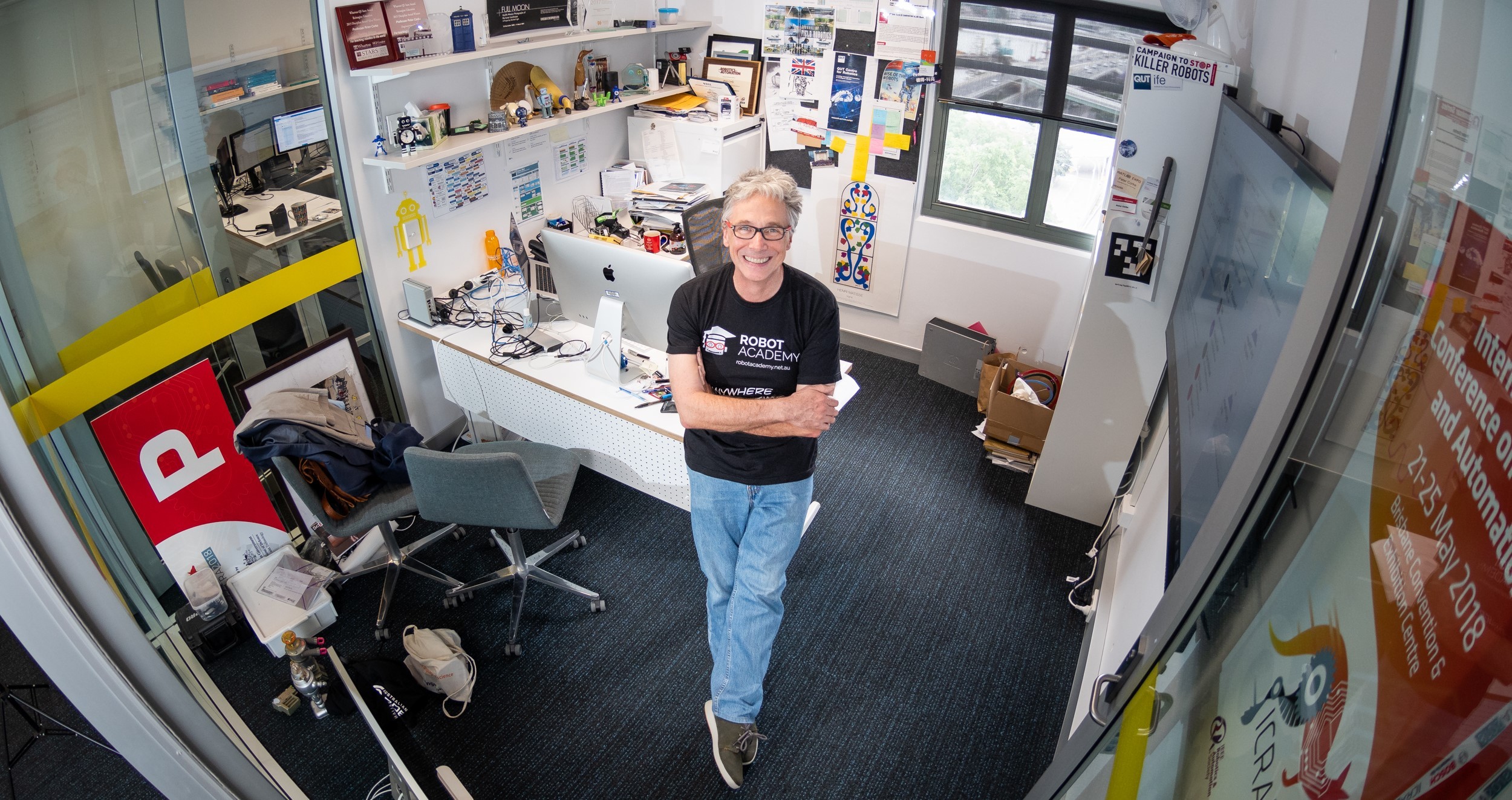
Feature image photo credit: Xavier Montaner, Corporate Photography Brisbane